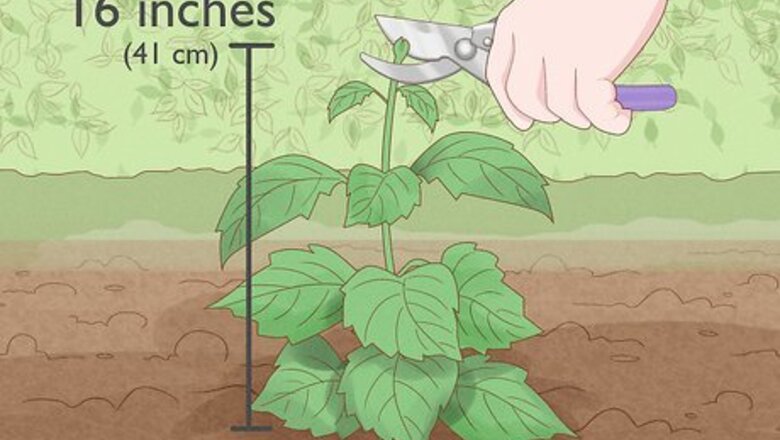
views
Pruning to Encourage Flower Growth
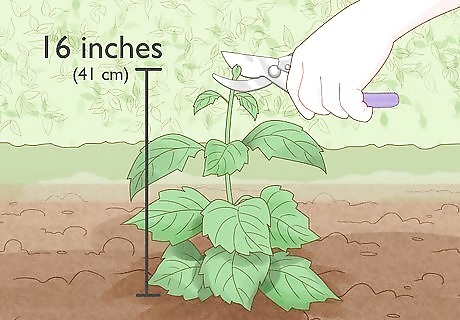
Pinch the tips off of dahlias once they reach 16 in (41 cm). When the dahlia first starts growing, it will develop 4 sets of leaves. Pinching off the top of the plant above the fourth set of leaves will encourage branching, resulting in a fuller plant and therefore more flowers. At this point in their growing cycle, the dahlias are sprouting rapidly, so they’ll recover quickly. You can continue to remove new growth throughout the growing season to encourage even more flower production. New growth is easy to remove with just your forefinger and thumb, although you can use a sharp tool if you prefer.

Limit each plant to 3 to 5 flowering stems if you want giant blooms. More flowers take up more of the dahlia’s energy, resulting in smaller flowers. To get the biggest dahlia blooms, restrict the number of flowers on each plant, so the energy can be directed towards growing just a few large flowers.
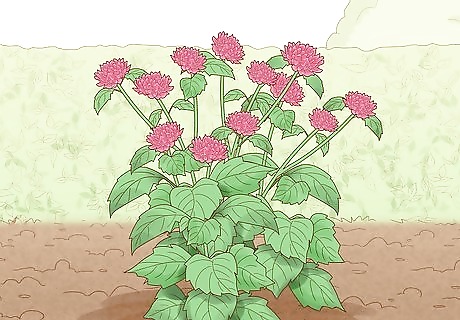
Allow up to 10 flower stems if you don’t mind smaller blooms. If you prefer to have more flowers and you aren’t as worried about size, just focus on cutting back new growth occasionally. As the dahlia branches out, you may see as many as 10 flowers on a single plant.

Cut off flowers with scissors once they have started to fade. The practice of removing faded flowers, also called deadheading, encourages more blooms. You may even see your dahlia bloom all the way through the fall if you remove faded flowers through the season. Since dahlias have tough, stringy stems, it’s easiest to remove the flowers with sharp scissors, pruning shears, or a knife. Cut back the flower stem to where it meets a main stem.
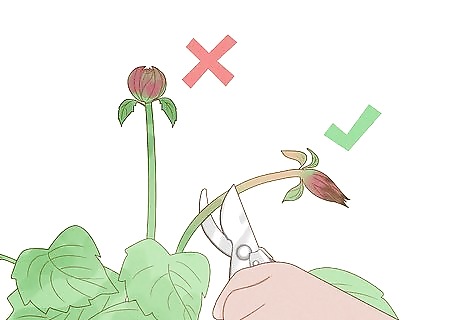
Do not remove rounded buds when you're deadheading. When all the petals have completely fallen off the flower, it can be hard to tell the difference between a new flower bud and the closed calyx left behind from the flower, also known as the dead head. However, the dead head is cone-shaped, whereas a bud is rounded. While removing dead heads will encourage new buds to begin blooming, removing the buds will delay flower development.
Pruning to Remove Disease
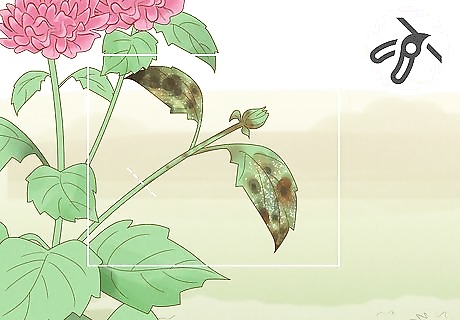
Cut off any diseased parts of the dahlias. If you notice any parts of the dahlias that are brown or shriveled, you can remove them with a pair of gardening shears to improve the appearance of your plants. Doing this regularly can also help to prevent diseases from spreading among your plants. Make sure to discard the diseased leaves, buds, and stems, such as by throwing them away or burning them.
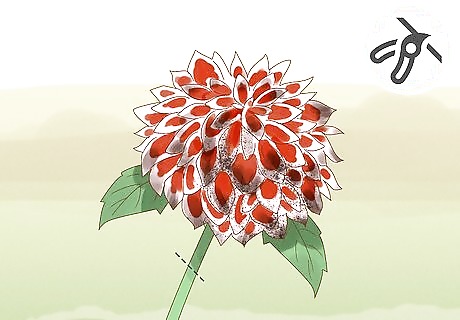
Remove flowers immediately if you see brown, water-soaked spots. This is a sign of a fungus, and eventually the fungus will lead to a wooly gray growth on the dahlia’s petals. The fungus will continue to spread if you don't remove the damaged petals. This fungus favors cool, wet conditions. If you live in a climate where this weather is common, you may need to spray the plant with a fungicide, such as iprodione, mancozeb, or fenhexamid, which you should be able to find at a garden supply store.
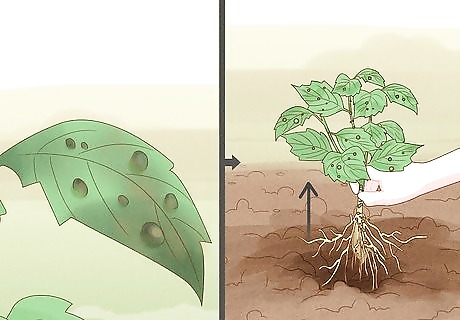
Pull up the entire plant, including the roots, if you see knots forming. This is a sign of the root knot nematode, which lives in warm, sandy soil, and which can affect a variety of different plants. The knots will appear near the roots, and they will continue to worsen until the plant dies. If your soil is infested with root knot nematodes, you will need to treat it with a nematicide before you can grow healthy plants.

Burn dahlia plants and roots if you see discoloration of the veins. The discoloration, combined with wilting leaves, is a sign of verticillium wilt, and it can stay in the soil for several years. This fungus will eventually kill your plant, and it can spread to other dahlias quickly if not treated. If burning isn't allowed in your area, discard these plants in the landfill. You will also need to destroy the entire dahlia plant if you see mosaic mottling on the leaves, which is usually due to a virus spread by aphids.
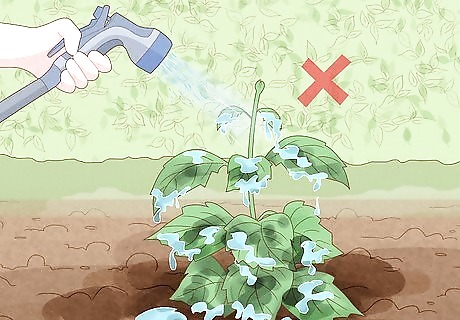
Avoid watering dahlias from overhead to prevent smut. Smut causes yellowish spots to appear on the leaves, and eventually leads to the leaves becoming brown and dry. Watering from directly overhead can lead to water pooling, allowing the growth of smut. Instead, try to water close to the base of the plant, so the water will go directly to the roots.
Pulling up Dahlia Bulbs
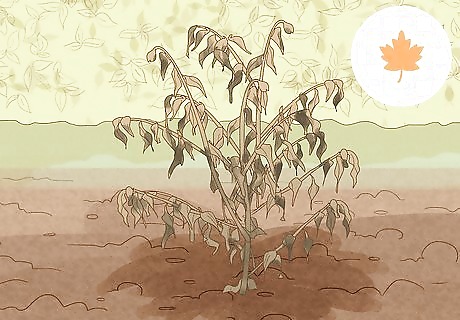
Dig up the dahlia bulbs each fall if you live in a cold region. If you experience hard freezes in the winter, it’s best to take the bulbs out of the ground. Dahlia bulbs can be stored over the winter so you can enjoy their cheerful blooms again the next year, and it’s easy to do. If you don't want to store the bulbs over the winter, just buy new bulbs in the spring. In the U.S., dahlias can be left in the ground starting at Zone 8 and warmer.
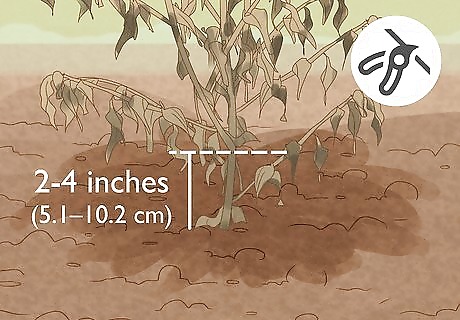
Cut back the foliage to 2–4 in (5.1–10.2 cm) above the ground. Dahlia foliage will turn black with the first frost. If you like, you can wait until this occurs before you cut the plant back to ensure you get the full enjoyment out of your dahlia for the season, and waiting will also help to get the bulb ready for storage.
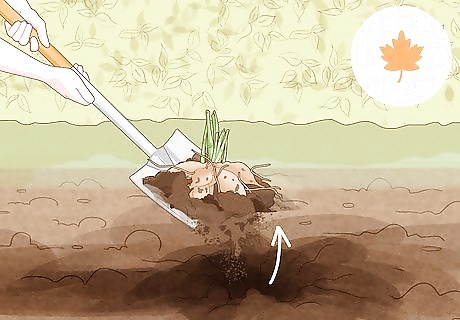
Dig up the bulbs gently with a small spade. You should just be able to free the root clump by loosening the dirt and pulling upwards. If multiple plants are growing close together, gently separate the plants from each other. Gently shake the soil off the roots. If there are any rotten bulbs on the root clump, cut them away with a sharp knife.
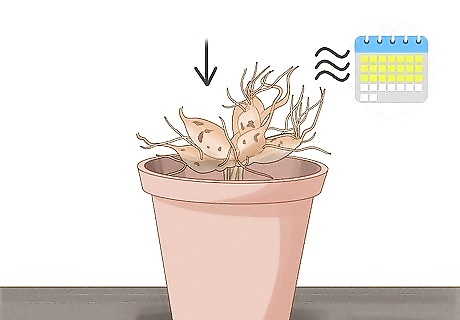
Store the bulbs upside down for about 3 weeks to dry naturally. Find a cool, dry place to hang up the bulbs, like a basement or a garden shed. Place the bulbs upside-down in a pot for several weeks to dry them. The bulbs should be completely dry before you store them, otherwise they could rot.

Pack the dahlia bulbs in a container with a loose material once they are dry. Fill your container with sawdust, vermiculite, styrofoam peanuts, or any other dry, loose material that will protect your bulbs from humidity. This will keep them from rotting while they’re in storage. The container should be loosely covered with a breathable material like burlap.

Store the bulbs in a well-ventilated, frost-free spot until spring. Keep the container in a space where it will not be disturbed. The ideal temperature for storage is 40–45 °F (4–7 °C), but anywhere from 35–50 °F (2–10 °C) will work. Once spring arrives, separate the bulbs from the main clump and plant them again.

















Comments
0 comment